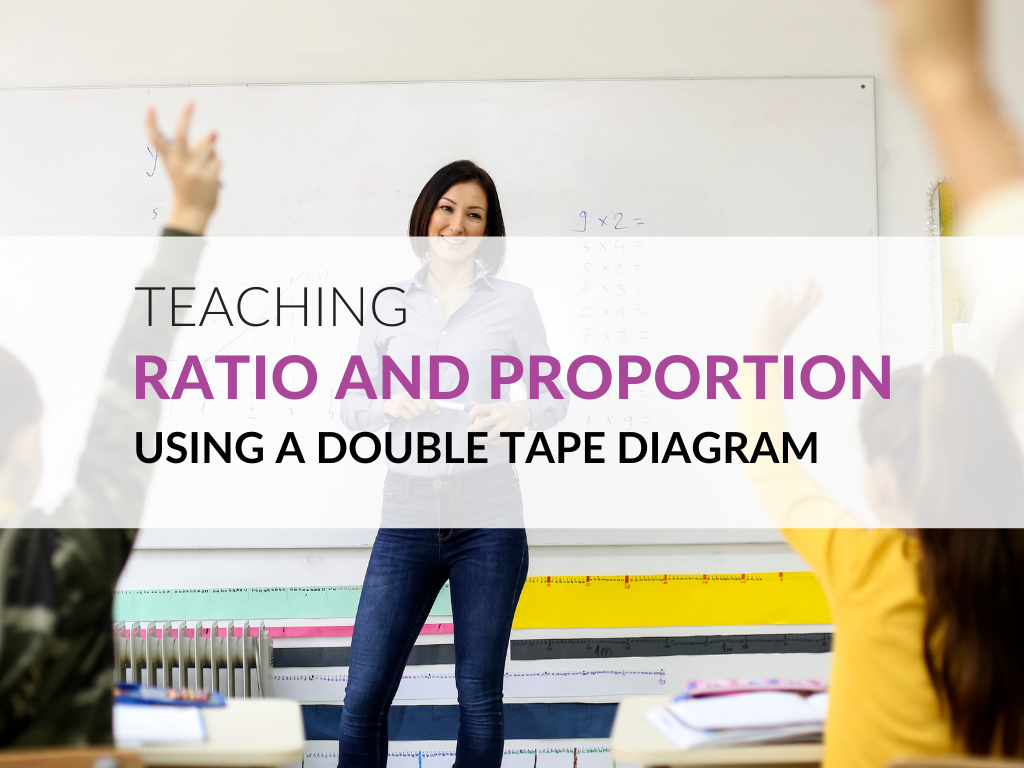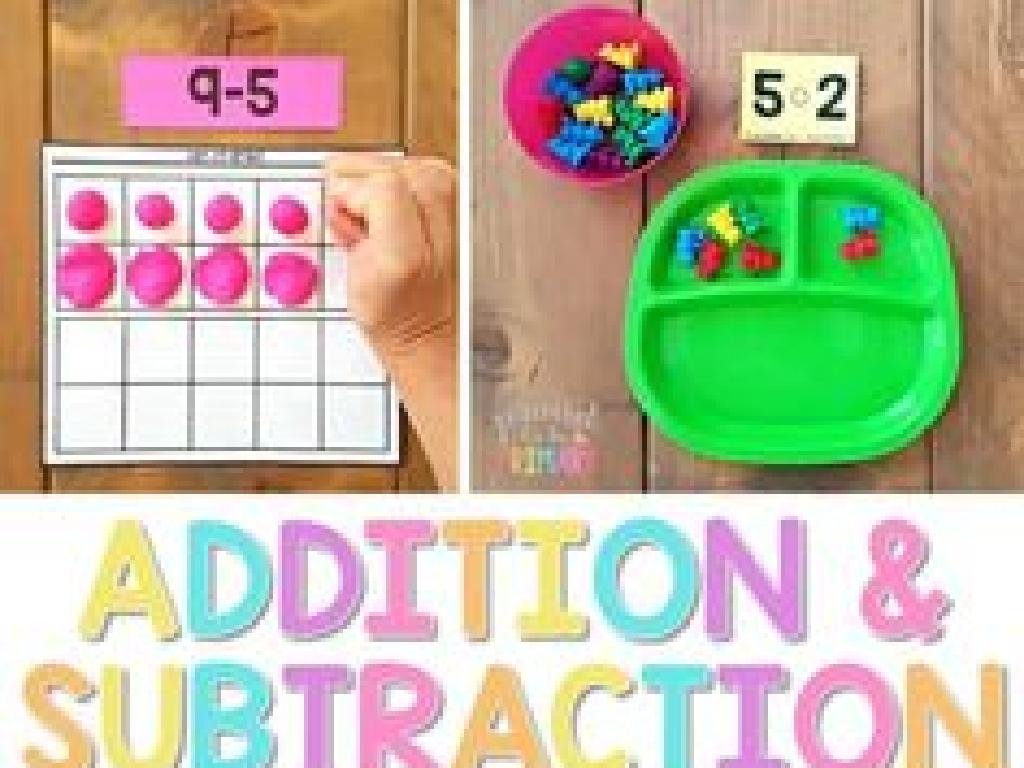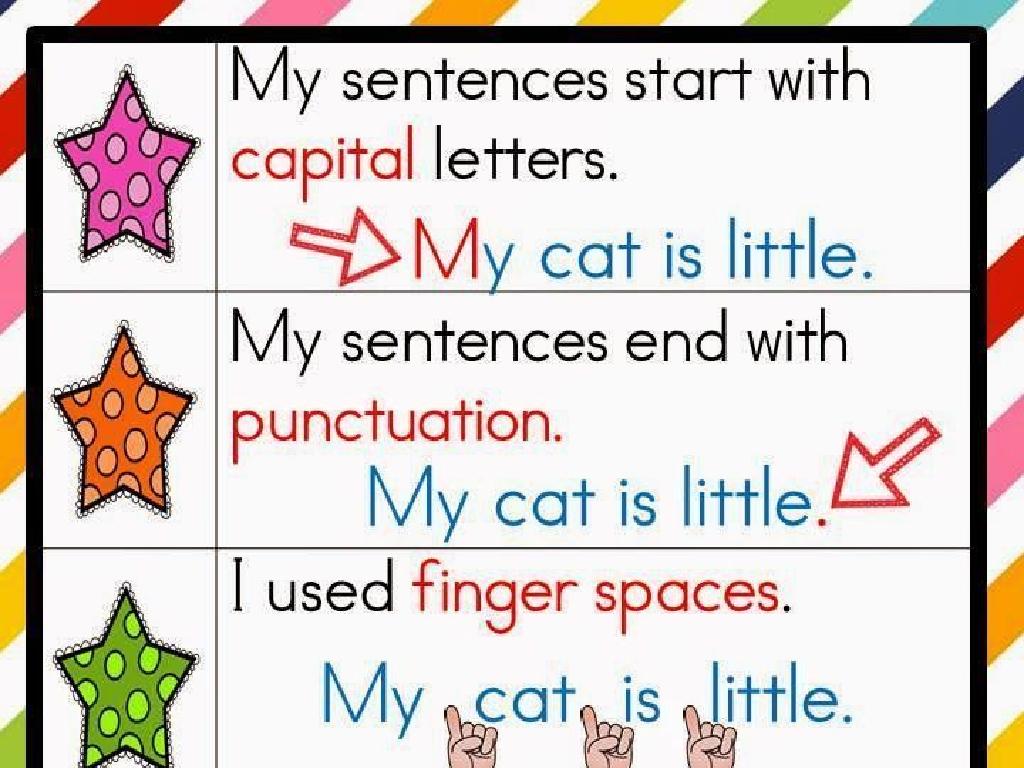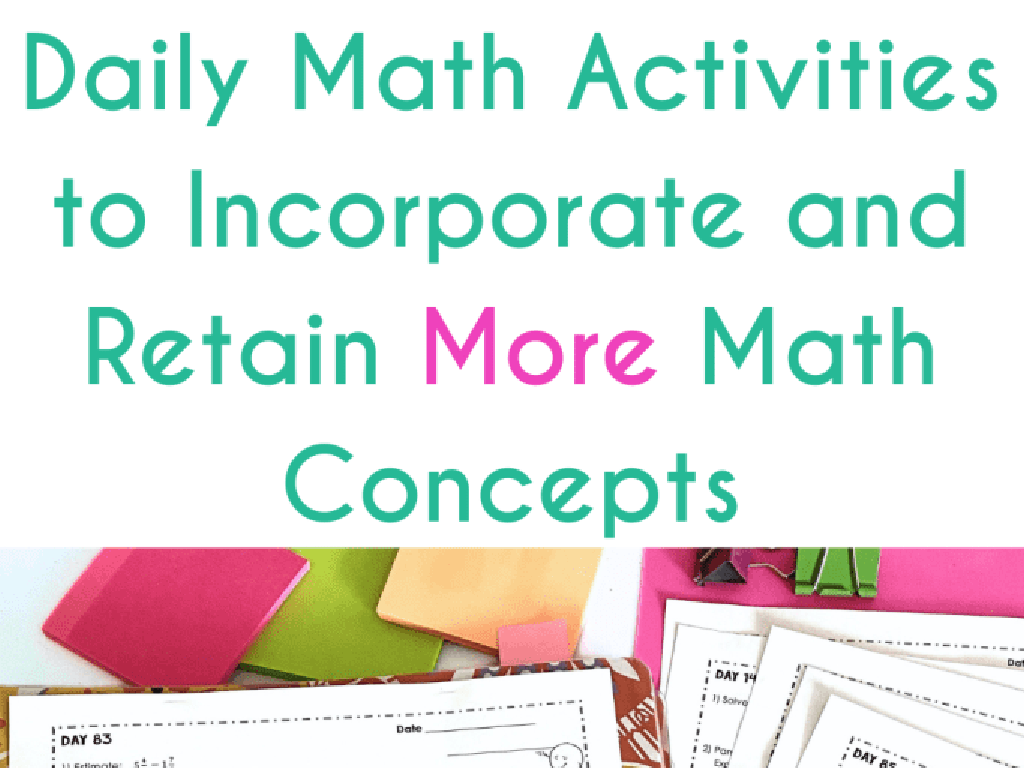Convert Rates And Measurements: Metric Units
Subject: Math
Grade: Eighth grade
Topic: Units Of Measurement
Please LOG IN to download the presentation. Access is available to registered users only.
View More Content
Welcome to Metric Units!
– Understanding measurement units
– Units quantify physical properties like length, mass, and volume.
– Importance of metric units
– Metric system is used globally, making it essential for science and trade.
– Converting metric measurements
– Learn to convert between meters, liters, and grams.
– Today’s lesson overview
|
This slide introduces the concept of measurement units, focusing on the metric system. Start by explaining that units are standards for expressing and comparing the physical properties of objects. Emphasize the global use of the metric system in science, industry, and commerce, which underscores its importance. The lesson will cover the basics of converting metric units, such as meters for distance, liters for volume, and grams for mass. Provide examples of each conversion and ensure students understand the decimal-based structure of the metric system, which simplifies calculations. The overview sets the stage for practical exercises in converting rates and measurements.
Understanding Metric Units
– The Metric System: universal standard
– Used worldwide for consistency in measurements
– Base units: m, l, g
– Meter for length, liter for volume, gram for mass
– Prefixes indicate magnitude
– kilo- (1000), centi- (1/100), milli- (1/1000), etc.
– Converting between metric units
– Use prefixes to convert: 1 km = 1000 m, 1 mg = 0.001 g
|
The metric system is a standardized system of measurement used globally, making it essential for students to understand and convert between units. The base units of meter, liter, and gram measure length, volume, and mass, respectively. Prefixes like kilo-, centi-, and milli- are used to represent multiples or fractions of these base units, simplifying the conversion process. For example, 1 kilometer (km) is 1000 meters (m), and 1 milligram (mg) is 0.001 grams (g). Ensure students practice converting between different metric units to build their proficiency.
Length Conversion in Metric Units
– Convert mm, cm, m, and km
– Understand how to switch between millimeters, centimeters, meters, and kilometers.
– Example: cm in 2 meters?
– 2 meters equals 200 centimeters because 1 m = 100 cm.
– Practice: 5000 mm to km
– To convert 5000 mm to km, divide by 1,000,000 because 1 km = 1,000,000 mm.
|
This slide introduces students to the concept of converting between different metric units of length. Emphasize the importance of understanding the metric system as it is used globally. Start with the example provided to show how to convert from meters to centimeters. Then, guide students through the practice problem, converting from millimeters to kilometers, reinforcing the concept of moving between units of measurement. Encourage students to remember the conversion factors: 1,000 mm in 1 m, 100 cm in 1 m, and 1,000 m in 1 km. Provide additional practice problems for students to solve independently, ensuring they grasp the conversion process.
Volume Conversion: Metric Units
– Understanding ml and l
– Milliliters (ml) and liters (l) measure volume
– Convert 3 liters to milliliters
– 3 l = 3000 ml (1 l = 1000 ml)
– Practice: 2500 ml to liters
– To convert ml to l, divide by 1000
– Key conversion concepts
|
This slide introduces students to the concept of volume conversion within the metric system, focusing on milliliters and liters. Start by explaining that milliliters and liters are units used to measure liquid volume, with 1 liter being equivalent to 1000 milliliters. Provide the example of converting 3 liters to milliliters by multiplying by 1000. For the practice problem, guide students to convert 2500 milliliters to liters by dividing by 1000, reinforcing the concept that division is used to convert from a smaller to a larger unit. Emphasize the importance of understanding these conversions for real-world applications such as cooking, science experiments, and more.
Mass Conversion: Grams and Kilograms
– Convert grams to kilograms
– 1 kilogram (kg) equals 1000 grams (g)
– Convert kilograms to grams
– To convert kg to g, multiply by 1000
– Example: 1000g to kg
– 1000g is equal to 1kg
– Practice: 2.5kg to g
– Multiply 2.5kg by 1000 to get grams
|
This slide focuses on understanding the conversion between grams and kilograms, which are standard units of mass in the metric system. Emphasize that 1 kilogram is equal to 1000 grams, a fundamental concept for converting between these units. Use the example to show how to divide by 1000 to convert grams to kilograms. For the practice problem, guide students to multiply 2.5 kilograms by 1000 to find the equivalent in grams. Encourage students to set up conversion factors and to always keep track of their units. This will help them not only with homework but also in real-life situations where they need to understand mass in different units.
Mastering Metric Conversions
– Understand the Metric Ladder
– A mnemonic to remember: King Henry Died By Drinking Chocolate Milk (kilo, hecto, deka, base, deci, centi, milli)
– Apply conversion factors
– Use ratios for precise conversion, e.g., 1 km = 1000 m
– Mental conversion strategies
– Approximate by moving the decimal point, e.g., 1.5 km H 1500 m
– Practice with examples
– Convert 2.5 km to meters or 750 ml to liters using these tricks
|
This slide aims to equip students with various methods to convert metric units effectively. The Metric Ladder is a foundational tool, and students should be familiar with the mnemonic to remember the order of units. Emphasize the importance of conversion factors for accuracy and introduce mental conversion as a quick estimation technique. Provide practice examples for students to apply these tricks, reinforcing their understanding through repetition. Encourage students to share their own tips and tricks for conversion to foster a collaborative learning environment.
Real-life Applications of Metric Units
– Importance of accurate measurement
– Metric units in cooking
– Recipes require precise grams or liters for best results
– Metric units in science
– Experiments need exact milliliters or grams for accuracy
– Metric units in construction
– Builders use meters and centimeters for building plans
|
This slide emphasizes the significance of accurate measurements in various real-life scenarios. Accurate measurement is crucial to ensure consistency and reliability, whether it’s following a recipe in cooking, conducting an experiment in science, or interpreting building plans in construction. Each example illustrates the practical use of metric units such as grams, liters, milliliters, meters, and centimeters. Encourage students to engage in a group discussion to share their own experiences with metric measurements in everyday life. This will help them connect classroom learning with the world around them and understand the ubiquity and importance of the metric system.
Class Activity: Metric Conversion Challenge
– Pair up for conversion problems
– Measure items with tools
– Use rulers for length, beakers for volume, scales for weight
– Calculate metric conversions
– Convert measurements into different metric units
– Present findings to class
|
This activity is designed to provide hands-on experience with metric conversions. Students will work in pairs to foster collaboration. Provide a variety of items for students to measure using rulers, beakers, and scales. They should practice converting these measurements into different metric units (e.g., millimeters to centimeters, grams to kilograms, milliliters to liters). After completing the measurements and conversions, each pair will present their findings, explaining the process and results. Possible activities: measuring classroom objects, comparing weights of different items, or determining the volume of liquids in different containers. This will enhance their understanding of the metric system and its practical application in everyday life.
Review and Q&A: Metric Conversions
– Recap metric conversion principles
– Open floor for student questions
– Homework: Conversion worksheet
– Practice with real-world problems on worksheet
– Ensure understanding before proceeding
– Address any confusion, reinforce learning
|
This slide is aimed at reviewing the key principles of metric conversion, ensuring students have a solid understanding of the topic. Begin with a brief recap of the steps involved in converting between different metric units, such as kilometers to meters or grams to kilograms. Encourage students to ask any questions they may have to clarify their understanding. Assign the metric conversion worksheet for homework, which includes a variety of problems to reinforce their skills. The worksheet should cover conversions between different metric units of length, mass, and volume. As a teacher, be prepared to answer questions and provide examples to help students grasp the concepts. Make sure all students are comfortable with the material before moving on to the next topic.






